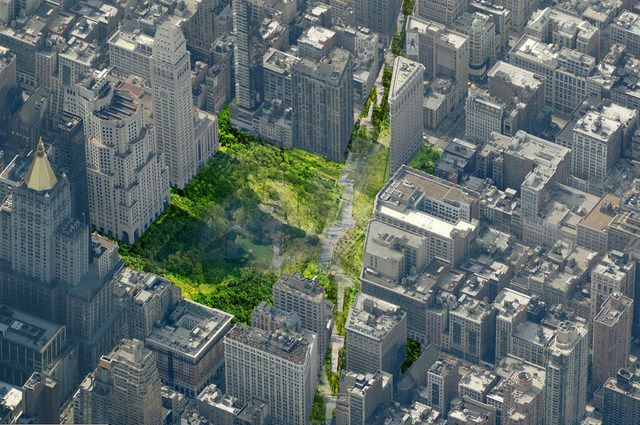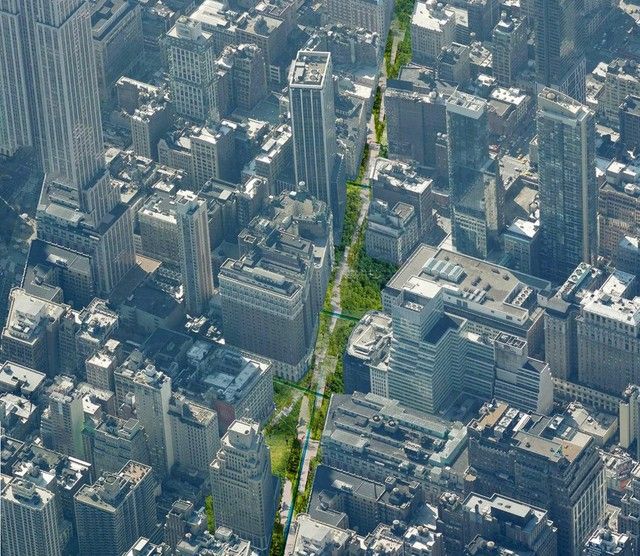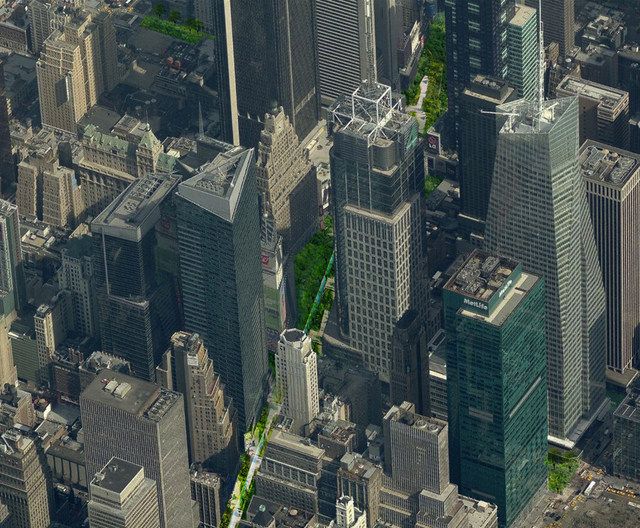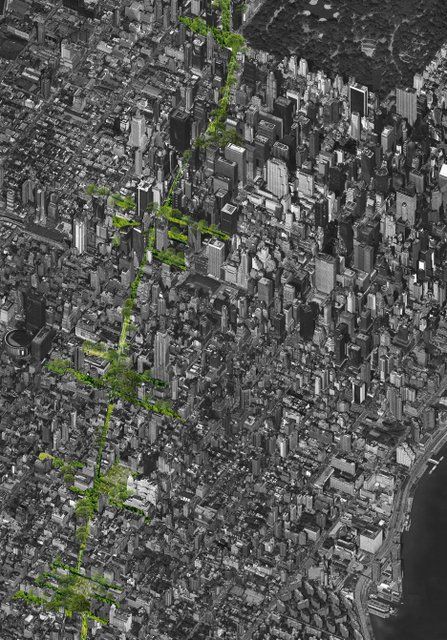✨You Can Touch the Times Square New Year's Eve Ball!
Find out how you can take home a piece of the old New Year's Eve ball!


Announced this past Friday, a proposal by Perkins Eastman for a “Green Line” is getting a considerable amount of buzz. The visionary concept, developed in the hopes of bringing more green space to New York, would combine two urban successes of the last decade – the High Line in Chelsea (2006) and the pedestrianization of Times Square (2009). Akin to the High Line, the Green Line would create a 40-block stretch of urban green public space, and like the pedestrianization of Times Square, it would close off even more of Broadway to vehicular traffic.
Dezeen, who first broke the story, points out that this project would be unique in the cityscape– rather than repurposing underutilized or unused areas, like the abandoned freight train track of the High Line or a trolley terminal for the proposed Lowline Park, the Green Line would convert one of the busiest streets in Manhattan into a park.

Broadway, which already has a bicycle lane, is a unique avenue that cuts diagonally through the city’s street grid and traverses its famous squares, including Union Square, Madison Square, Herald Square, Times Square, and Columbus Circle.

Perhaps even more importantly, the Green Line could make Broadway a vital part of the city’s drainage system, addressing well-known stormwater management problems here. Converting the street into a green space would allow water to drain into soil rather channeling the water elsewhere. On the subject of drainage, Jonathan Cohn, Perkins Eastman’s current president, told Dezeen that “rather than allowing stormwater to enter the underground sewer system, where during heavy rain and snow storms it combines with untreated wastewater and discharges directly into the city’s waterways, much of the rainwater could be allowed to percolate directly into the earth.” Using the latest in stormwater management technology, the Green Line would contain bioswales, permeable paving stones and of course, plants, to stem the tide of stormwater.

The project, if implemented, could also raise property values along the 40 block stretch. Looking at the revitalization of Hudson Yards, architects believe that creating a park that residents could seamlessly use would create property values so high the costs would essentially pay for themselves. As Cohn said to Dezeen, “recognizing that green public space is at a premium in the city, and proximity to it is perhaps the best single indicator of value in real estate, the Green Line proposes a new green recreational space that is totally integrated with the form of the city.”

While the Green Line is just a visionary proposal for now, nothing in New York City is ever out of the realm of possibility. Discover 10 more High Line-inspired projects around the globe, take a look inside the Lowline lab, and see the vision for +POOL in the East River.
Subscribe to our newsletter